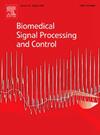Automatic detection of Alzheimer’s disease from EEG signals using hybrid PSO-GWO algorithm
IF 4.9
2区 医学
Q1 ENGINEERING, BIOMEDICAL
引用次数: 0
Abstract
Early diagnosis of Alzheimer’s disease (AD) is vital. EEG is effective; however, its multi-channel property leads to redundancy and affects classification performance. Current studies frequently neglect the synergy of multi-feature extraction and Intelligent optimisation algorithm for overall performance in EEG channel screening.
This study innovatively combines Particle Swarm Optimization (PSO) and Grey Wolf Optimization (GWO) to develop a PSO-GWO hybrid model that aims to overcome the limitations of PSO, in particular its tendency to converge to local optima. The model significantly improves the performance of multi-channel EEG signal screening for AD. First, geometric features are extracted from AD EEG signals using a second order difference plot (SODP), resulting in two sets of uncorrelated features. Key features SAV, SCC and CTM are selected using XGBoost feature importance ranking and statistical analysis. The Relief algorithm then merges these key features into a fused vector for each channelNext, the PSO-GWO method is used to determine the optimal channel combination (Fp1, T3, T5, P3, and O2), which is input into the XGBoost classifier. 5-fold Cross-validation and LOSO validation accuracy of 96.35% and 91.08%, respectively, are achieved between patients and the normal control group. Finally, SHAP analysis highlights the positive contributions of the selected channels, confirming the effectiveness of the framework in accelerating channel selection and improving AD detection efficiency.
This study fills the void of collaborative optimisation of multi-features and intelligent algorithms in EEG channel screening, provides an efficient framework for AD detection, and enhances the understanding of neurological disease mechanisms.
求助全文
约1分钟内获得全文
求助全文
来源期刊

Biomedical Signal Processing and Control
工程技术-工程:生物医学
CiteScore
9.80
自引率
13.70%
发文量
822
审稿时长
4 months
期刊介绍:
Biomedical Signal Processing and Control aims to provide a cross-disciplinary international forum for the interchange of information on research in the measurement and analysis of signals and images in clinical medicine and the biological sciences. Emphasis is placed on contributions dealing with the practical, applications-led research on the use of methods and devices in clinical diagnosis, patient monitoring and management.
Biomedical Signal Processing and Control reflects the main areas in which these methods are being used and developed at the interface of both engineering and clinical science. The scope of the journal is defined to include relevant review papers, technical notes, short communications and letters. Tutorial papers and special issues will also be published.
 求助内容:
求助内容: 应助结果提醒方式:
应助结果提醒方式:


